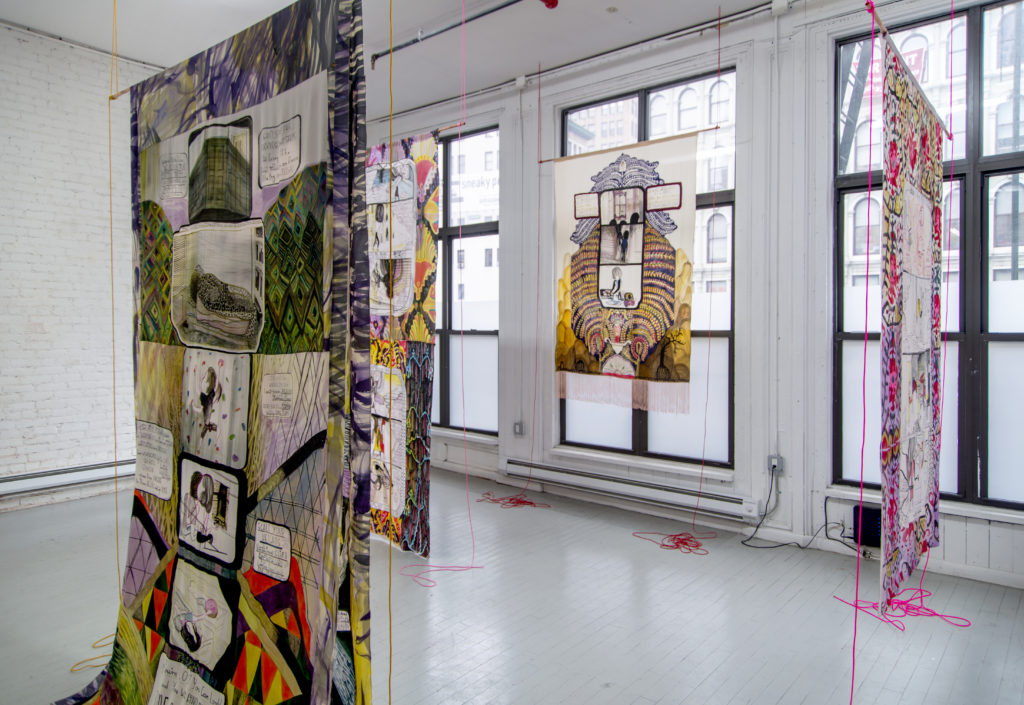
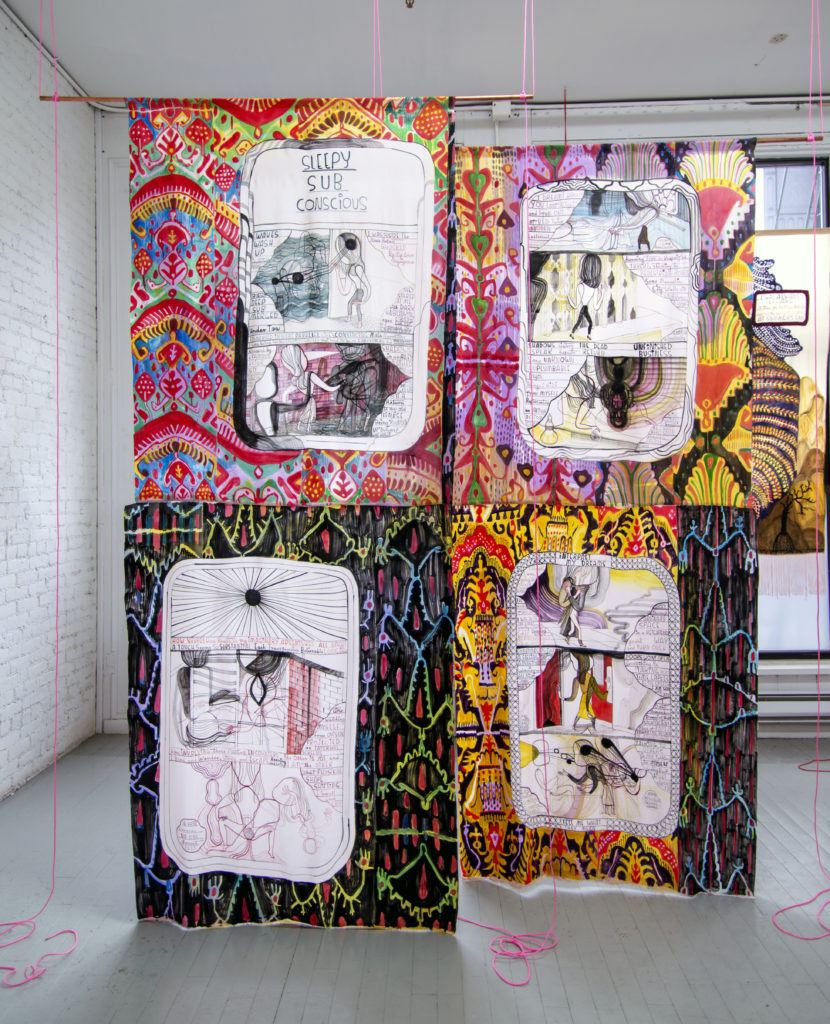
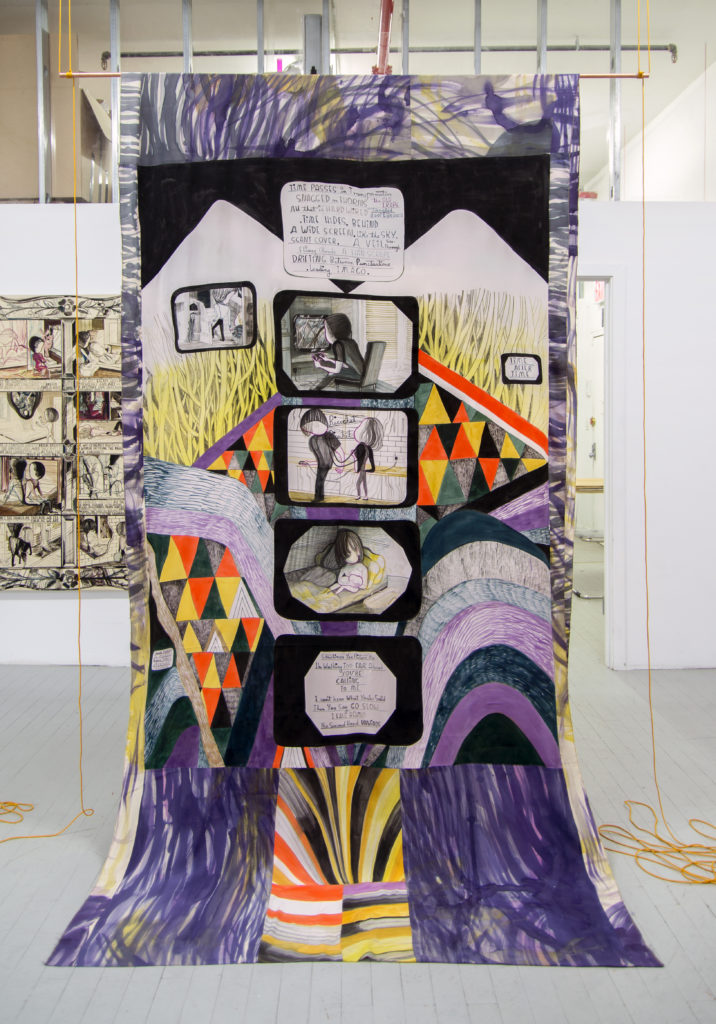
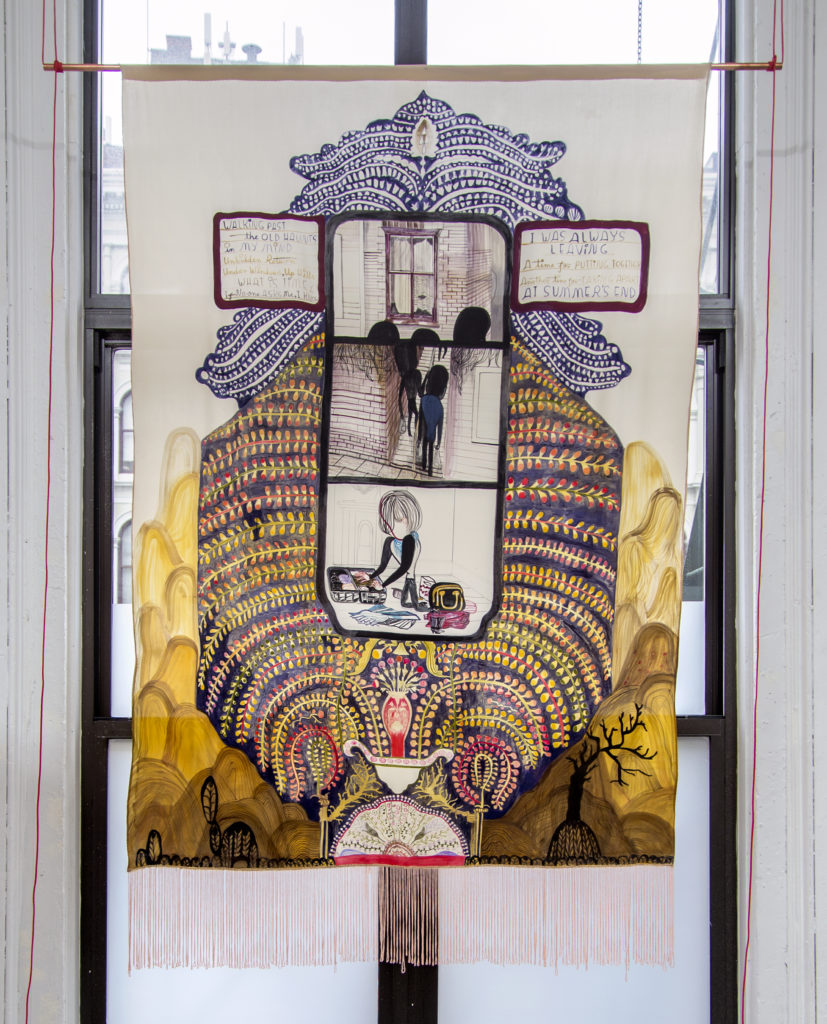
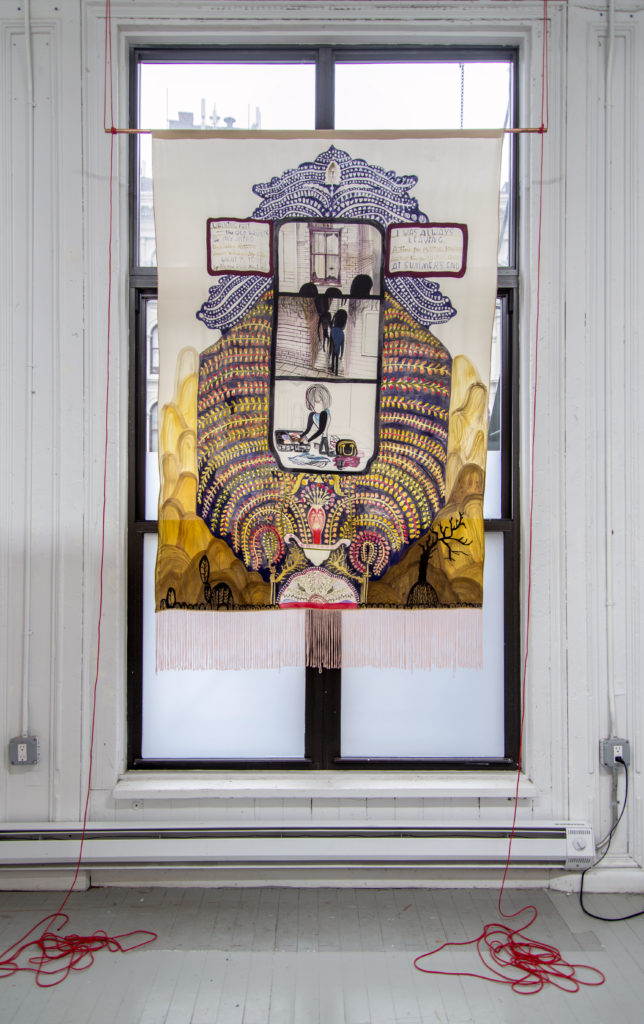


In her essay “The Wet and the Dry,” Moyra Davey collects excerpts from her own diaries, and reproduces them alongside notes on the diaries of others. Of the project, she writes that “this document parallels another one written from notes collected in diaries. That one is accompanied by the uneasy feeling of cannibalizing myself. This document, though not a book, is trying to begin according to a principle described by Marguerite Duras: ‘To be without a subject for a book, without any idea of a book, is to find yourself in front of a book. An immense void. An eventual book. In front of writing, live and naked, something terrible to surmount.’”
In one of the exhibition’s two paintings, a woman finds herself in front of a book: kneeling on a wooden floor, writing lines on loose pages, something terrible to surmount. It’s one of numerous images that Talbot uses to visualize the intersecting spaces of the lived, the written, and the remembered, a private landscape of domestic interiors, made and unmade beds, coffee cups, books, women on sidewalks, and children and men. A cryptic, lyrical caption follows below: “CRACKING inside nerves, Downfallen Lovers/I PLUCKED THE TIRED LACES/–APERTURE OPEN–/OF MY WORN OUT SHOES/ONE FOOT BENEATH My Heart.”
The opening image of the exhibition’s other painting is equally of a woman writing, this one Anaïs Nin, positioning Talbot as one diarist in conversation with another, each creating a language in which to render a woman’s relationship to herself. In an essay titled “The New Woman,” Nin describes writing as a project with equal parts futurity—“I believe one writes because one has to create a world in which one can live”—and nostalgia: “We write to taste life twice, in the moment and in retrospection.” In Talbot’s saturnine depiction, Nin sits at a desk, writing in a diary; behind her, two spectral bodies entwine, a memory of sex. Fragments from “The New Woman” are reproduced underneath.
The figures in these graphic panels are inchoate, mostly featureless, as in memory: placeholders for the idea of oneself, or of others. Their faces are indistinct. They’re set in a decorative framework in an acid palette of pinks and greens. Like textiles, these mutated patterns are redolent of women’s work, and the historical relationship of women’s work to power. As viewers, we’re reminded that the images they frame—of life, sex, dreams, art, the social—exist in the context of that relationship.
Text by Tess Edmonson
Entrance:
Emma Talbot
Entrances and Exits
2015
Acrylic paint on silk
208 x 140 cm (81 ⅞” x 55 ⅛”)
Unique
Emma Talbot
Holes and Stains and Marks
2014
Acrylic paint on canvas
210 x 150 x 2.5 cm (82 ⅝” x 59″ x ½”)
Unique
Gallery:
Emma Talbot
The Mountain, Time After Time
2016
Acrylic paint on silk
615 x 155 cm (242 ⅛” x 61″)
Unique
Emma Talbot
Interpret My Dreams #1 & Interpret My
Dreams #2
2016
Acrylic paint on silk
Each Approximately 280 x 120 cm (110 ¼” x
47 ¼”)
Both Unique
On Window:
Emma Talbot
What is Time? If No One Asks Me, I Know
2015
Acrylic paint on silk: 204 x 130 cm (80 ⅜” x
51 ⅛”)
Unique
Right Hand Wall
Emma Talbot
Unconscious Narrative
2015
Acrylic paint on silk
204 x 140 cm (80 ⅜” x 55 ⅛”)
Unique
Back Wall
Emma Talbot
Self Reflection
2009
Acrylic paint on canvas
163 x 112 cm (64 ⅛” x 44 ⅛”)
Unique